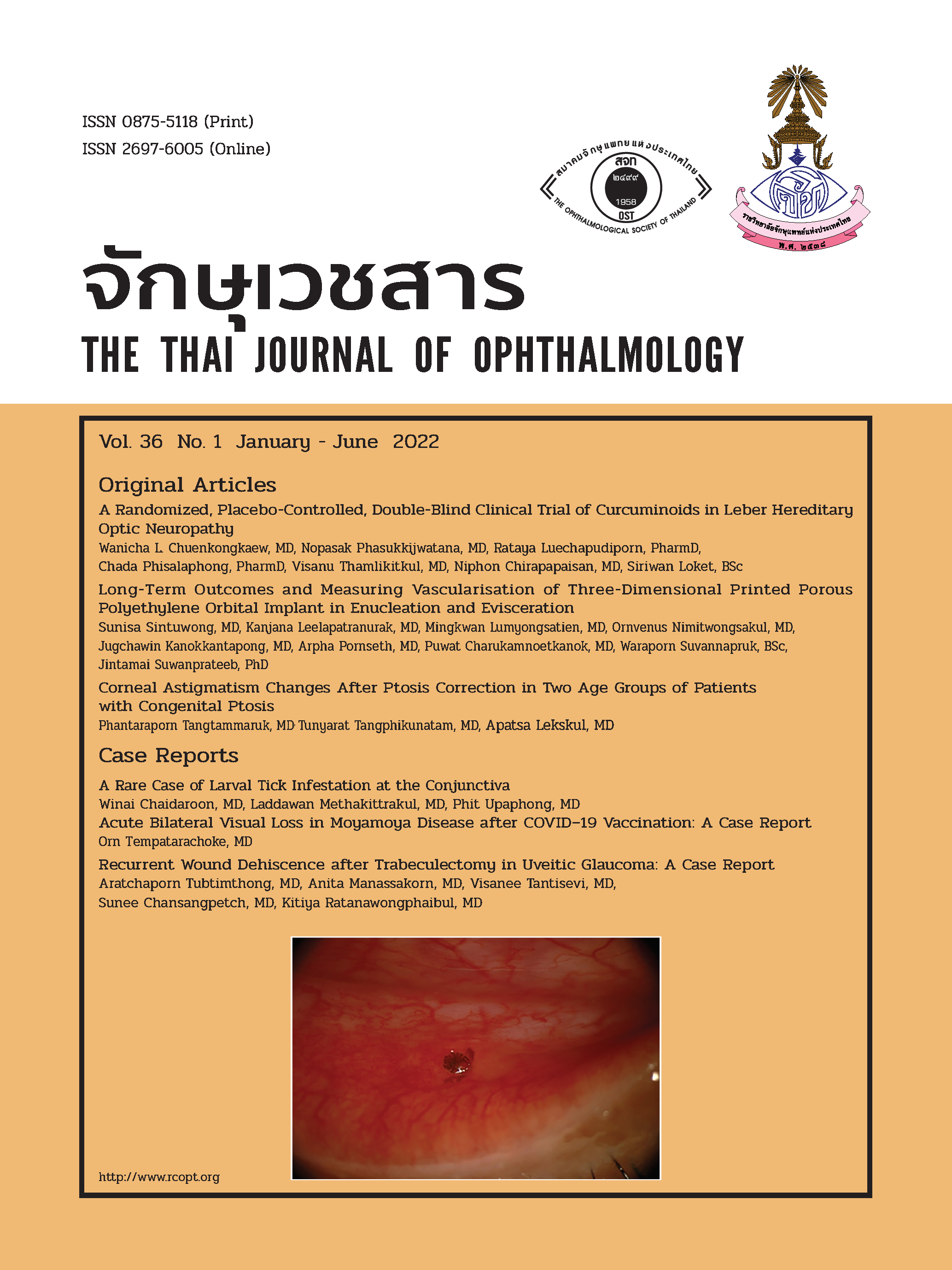A Rare Case of Larval Tick Infestation at the Conjunctiva
Keywords:
Amblyomma americanum, conjunctiva, lone star, parasite, tickAbstract
This is a case report of a middle-aged man without underlying disease presented with acute pain in his left eye. Ocular examination showed an insect-like foreign body attached on his left lower palpebral conjunctiva. The foreign body was removed gently by non-toothed forceps and a cotton tip applicator. It was further identified as the larval form of Amblyomma americanum tick. A topical combination steroid-antibiotic medication was prescribed. It was further identified as the larval form of Amblyomma americanum tick. In summary, a thorough eye examination is necessary for the early recognition of this rare condition.
References
Jensen LA, Snow RL, Clifford CM. Spinose ear tick, Otobius megnini, attached to the conjunctiva of a child's eye. J Parasitol. 1982;68(4):528.
Bodé D, Speicher P, Harlan H. A seed tick infestation of the conjunctiva: Amblyomma americanum larva. Ann Ophthalmol. 1987;19(2):63-64.
Meades KV, Lam G. Larva tick bite of the conjunctiva. Aust N Z J Ophthalmol. 1991;19(4):365-366. doi:10.1111/j.1442-9071.1991.tb00687.x
Love MC, Platt L, Westfall CT. Lone-star tick bite of the conjunctiva. Arch Ophthalmol. 2001;119(12):1854-1855.
Willen C, Mullen GR, Yee J, et al. Conjunctival attachment of a tick: clinicopathologic report of a case. J Emerg Med. 2011;40(3):e41-e44. doi:10.1016/j.jemermed.2007.11.
Celik E, Türkoğlu EB, Boz AA, et al. Conjunctival attachment of a tick: case report. Semin Ophthalmol. 2014;29(4):186-188. doi:10.3109/08820538.2013.807847
Teong JM, Adler PA, Doggett SL, et al. Conjunctival Attachment of a Live Paralysis Tick, Ixodes holocyclus, in a Child: A Case Report. Case Rep Ophthalmol. 2015;6(1):120-126. Published 2015 Apr 1. doi:10.1159/000381743
Kuriakose RK, Grant LW, Chin EK, et al. Deer tick masquerading as pigmented conjunctival lesion. Am J Ophthalmol Case Rep. 2016;5:97-98. Published 2016 Dec 30. doi:10.1016/j.ajoc.2016.12.018
Childs JE, Paddock CD. The ascendancy of Amblyomma americanum as a vector of pathogens affecting humans in the United States. Annu Rev Entomol. 2003;48:307-337. doi:10.1146/annurev.ento.48.091801.112728
Stafford III KC. Tick Management Handbook. Connecticut; EPS Printing II; 2007: 1-34.
Wormser GP, Masters E, Liveris D, et al. Microbiologic evaluation of patients from Missouri with erythema migrans. Clin Infect Dis. 2005;40(3):423-428. doi:10.1086/427289
Wormser GP, Masters E, Nowakowski J, et al. Prospective clinical evaluation of patients from Missouri and New York with erythema migrans-like skin lesions. Clin Infect Dis. 2005;41(7):958-965. doi:10.1086/432935
Parola P, Davoust B, Raoult D. Tick- and flea-borne rickettsial emerging zoonoses. Vet Res. 2005;36(3):469-492. doi:10.1051/vetres:2005004
Eamudomkarn C. Tick-borne pathogens and their zoonotic potential for human infection in Thailand. Chiang Mai V J. 2017:127-36.
Sumrandee C, Baimai V, Trinachartvanit W, Ahantarig A. Molecular detection of Rickettsia, Anaplasma, Coxiella and Francisella bacteria in ticks collected from Artiodactyla in Thailand. Ticks Tick Borne Dis. 2016;7(5):678-689. doi:10.1016/j.ttbdis.2016.02.015
Downloads
Published
Issue
Section
License
Copyright (c) 2022 THE THAI JOURNAL OF OPHTHALMOLOGYThe Thai Journal of Ophthalmology (TJO) is a peer-reviewed, scientific journal published biannually for the Royal College of Ophthalmologists of Thailand. The objectives of the journal is to provide up to date scientific knowledge in the field of ophthalmology, provide ophthalmologists with continuing education, promote cooperation, and sharing of opinion among readers.
The copyright of the published article belongs to the Thai Journal of Ophthalmology. However the content, ideas and the opinions in the article are from the author(s). The editorial board does not have to agree with the authors’ ideas and opinions.
The authors or readers may contact the editorial board via email at admin@rcopt.org.


